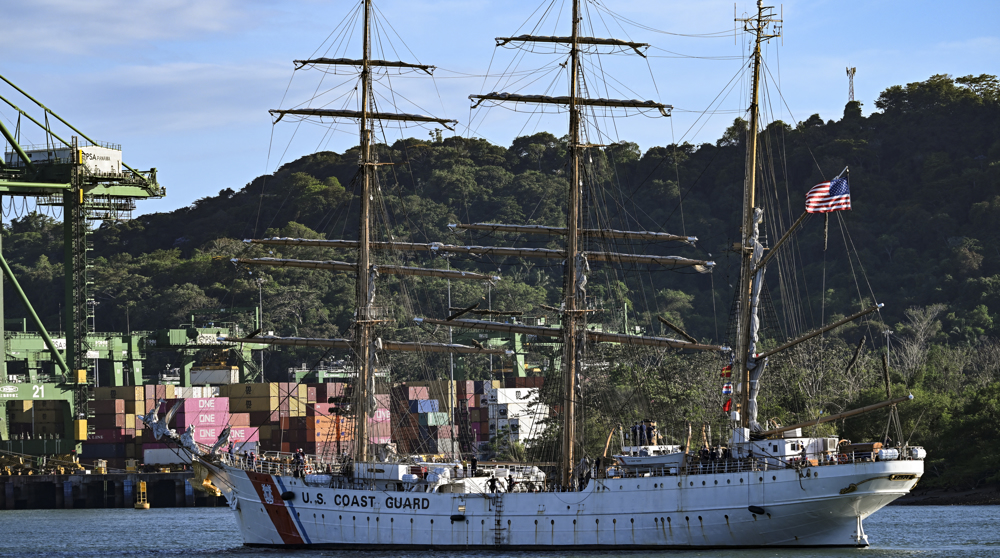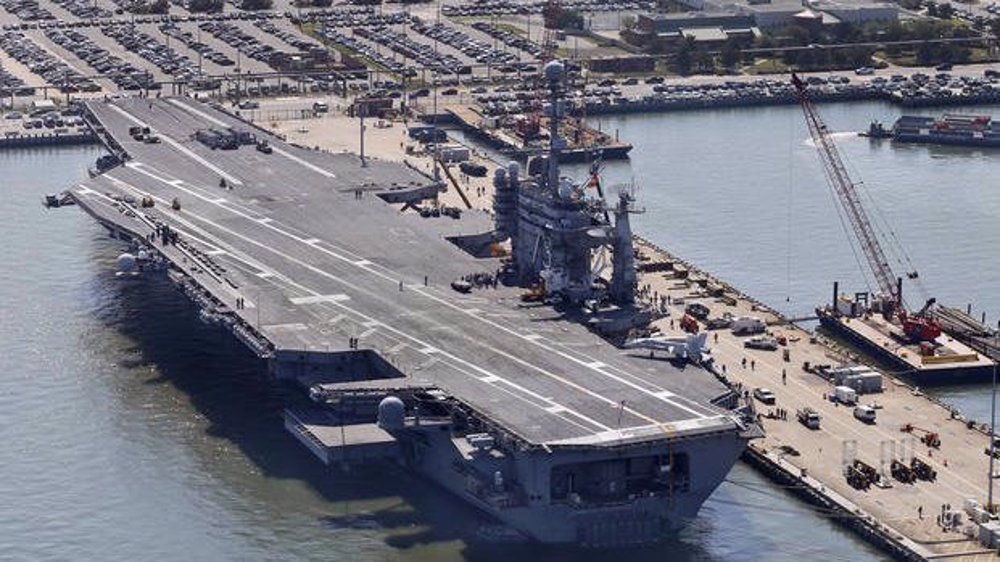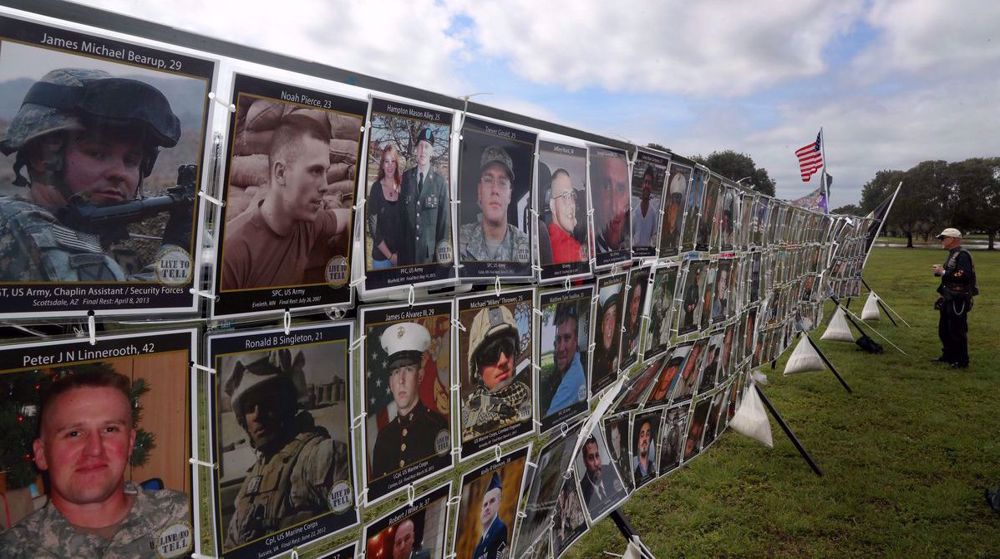Surge of suicides aboard US warship prompts transfer of 100s of sailors
The commanding officer of a US aircraft carrier has told his crew the Navy will begin moving sailors off the warship following a string of suicides amid complaints by service members about conditions aboard the vessel, prompting its delayed departure from its base.
Captain of the USS George Washington, Brent Gaut, declared on Thursday that the ship will begin moving on Monday 260 sailors "to an offsite barracks-type living arrangement on Norfolk Naval Shipyard in Portsmouth" in the state of Virginia, the military.com news outlet reported Friday.
"We'll be able to expand that number at about 50 additional beds per week as we figure out exactly what is needed," Gaut stated.
The move comes at the end of a month that saw three sailors aboard the ship dying by suicide, after a previously undisclosed string of suicides going back to at least July of last year.
The news outlet added that it has been able to confirm at least five suicides by sailors assigned to the warship in the last 10 months -- the Navy has disputed the cause of death for one of those sailors -- and eight in total since November 2019.
The development follows an April 22 visit to the ship by the Navy’s top enlisted official, Master Chief Petty Officer of the Navy Russell Smith, during which the crew was informed that the US Navy is largely powerless to improve conditions.
Smith further told a sailor who had asked about living conditions that the Navy "probably could have done better to manage your expectations coming in here" before informing the crew that raising concerns should be done "with reasonable expectations and then understanding what ... what this is like."
"What you're not doing is sleeping in a foxhole like a Marine might be doing," he emphasized.
According to the commanding officer, the ship currently has 422 sailors living on board. Since sailors typically do not receive an allowance for housing until the E-5 rank, those living onboard a ship while it's in a shipyard tend to be the most junior crew members.
The captain noted that sailors will still have to sleep aboard the ship when they stand duty -- a Navy practice in which a portion of the crew remains aboard the ship overnight to be ready to respond to emergencies.
The news comes as details about who has died aboard the aircraft carrier and how are slowly coming to light amid mixed messages reported by the crew.
Sailors reported that Gaut told the crew on April 11 that the ship had had nine suicides in nine months. Another death followed on April 15; Gaut told the crew it also was a suicide. The Navy has yet to confirm or deny that Gaut relayed those numbers to the crew.
The Navy, meanwhile, did not provide details on who those sailors were and referred inquiries to local law enforcement for the cause of death.
The Navy also disclosed that there were three additional suicides dating back to November 2019.
Regardless of the final count, George Washington has experienced a cluster of suicides unheard of in recent years, though suicide rates have been climbing alarmingly for service members across the services.
Rear Adm. John Meier, commander of Naval Air Force Atlantic, said in a statement this week that "while the Navy is a resilient force, we are not immune from the same challenges that affect the nation that we serve."
‘US troops at remote and overseas bases attempt suicide more often’
Meanwhile, a new report by Government Accountability Office (GAO) further states that US soldiers stationed at remote and overseas bases attempted suicide at slightly higher rates but were less often successful compared to the general active-duty military population.
Nearly 19 percent of all suicide attempts occurred at those bases, but only 10 percent of suicide deaths, the federal watchdog found. The remote facilities may have higher suicide risk factors, such as social isolation and less access to mental health services, but troops at overseas bases also often lack the same access to personal firearms, which are used in the majority of military suicides.
However, the Pentagon has not fully assessed those suicide risks, and that process could help reduce such deaths, the GAO said in the report mandated by Congress. The report listed more than 50 installations that are overseas or considered remote, including Fort Wainwright, Alaska; Guantanamo Bay, Cuba; and Naval Air Facility Misawa, Japan.
Lawmakers ordered the GAO to look into suicides at remote and overseas bases in 2020 following a 33.5 percent increase in deaths over the previous four years.
Between 2016 and 2020, 1,806 active-duty troops took their own lives across all duty stations, while an additional 7,178 attempted suicide, according to the GAO.

‘US attacks on Yemen triggering widespread oil spill, environmental hazards for region’

‘Full-fledged war crime’: Nearly 70 killed in US airstrike on migrant detention center in Yemen

Trump wants 'free' transit for US ships in Panama, Suez canals
US Navy fighter jet falls into sea as aircraft carrier tries to evade Yemeni attack
VIDEO | Cleanup begins after fire fully extinguished at Shahid Rajaee Port
VIDEO | International Public Tribunal reports war crimes committed by Ukrainian neo-Nazis
Iran seeks concrete guarantees in nuclear talks, not promises: Sr. Lawmaker
Ben-Gvir met with chants of ‘war criminal’ during visit to US Capitol
Chinese president offers condolences to Iran over deadly port explosion
A new dawn in the Sahel: President Traore and Burkina Faso’s anti-imperialist rebirth
Hopeful signs in Iran-Africa ties as Tehran hosts third summit











 This makes it easy to access the Press TV website
This makes it easy to access the Press TV website